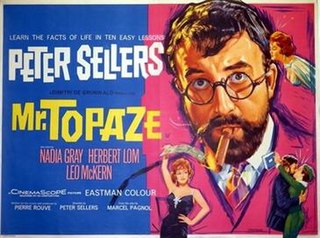
Mr. Topaze is a 1961 British film directed by Peter Sellers and starring tarring Sellers, Nadia Gray, Leo McKern, and Herbert Lom. It was Sellers' directorial debut. The screenplay was written by Pierre Rouve based on the 1928 playTopaze by Marcel Pagnol.
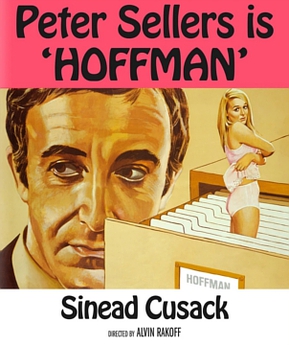
Hoffman is a 1970 British drama film directed by Alvin Rakoff and starring Peter Sellers, Sinéad Cusack, Ruth Dunning and Jeremy Bulloch. It is the tale of an older man who blackmails an attractive young woman into spending a week with him in his flat in London, hoping that she will forget her crooked fiancé and fall in love with him instead.

Salt and Pepper is a 1968 British comedy film directed by Richard Donner and starring Sammy Davis Jr., Peter Lawford, Michael Bates, Ilona Rodgers and John Le Mesurier.
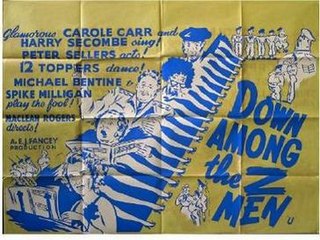
Down Among the Z Men is a 1952 black-and-white British comedy film directed by Maclean Rogers and starring the Goons: Spike Milligan, Peter Sellers, Michael Bentine and Harry Secombe.

The Rise and Rise of Michael Rimmer is a 1970 British satirical film directed by Kevin Billington, and starring Peter Cook, Vanessa Howard and John Cleese. It was co-written by Cook, Cleese, Graham Chapman and Billington. The film was devised and produced by David Frost under the pseudonym "David Paradine".
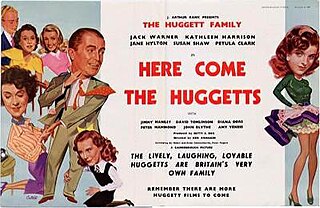
Here Come the Huggetts is a 1948 British comedy film, the first of the Huggetts series, about a working class English family. All three films in the series were directed by Ken Annakin and released by Gainsborough Pictures.
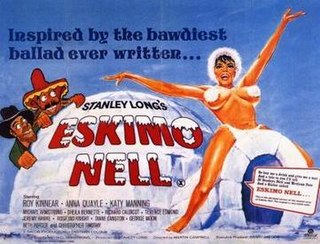
Eskimo Nell, is a 1975 British sex comedy film directed by Martin Campbell and starring Roy Kinnear and Christopher Timothy. It was produced by Stanley Long. Though inspired by "The Ballad of Eskimo Nell", the movie owes little to the original bawdy song. Long called it "my definitive statement about the sex films". The film features little nudity.

Clive Stanley Donner was a British film director who was part of the British New Wave, directing films such as The Caretaker, Nothing but the Best, What's New Pussycat?, and Here We Go Round the Mulberry Bush. He also directed television movies and commercials through the mid-1990s.

Love on the Dole is a 1941 British drama film starring Deborah Kerr and Clifford Evans. It was adapted from the novel of the same name by Walter Greenwood. It was the first English-made feature film to show English police wielding batons against a crowd.

The Dock Brief is a 1962 black-and-white British legal satire directed by James Hill, starring Peter Sellers and Richard Attenborough, and based on the play of the same name by John Mortimer.

The Caretaker is a 1963 British drama film directed by Clive Donner and starring Alan Bates, Donald Pleasence and Robert Shaw. It was based on the Harold Pinter play of the same name.
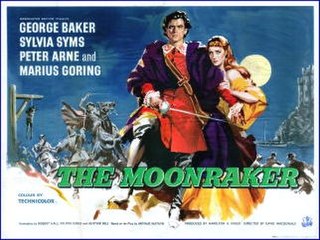
The Moonraker is a 1957 British swashbuckler film directed by David MacDonald and starring George Baker, Sylvia Syms, Marius Goring, Gary Raymond, Peter Arne, John Le Mesurier and Patrick Troughton. It was based on the 1952 play of the same title by Arthur Watkyn. It was released in 1958.
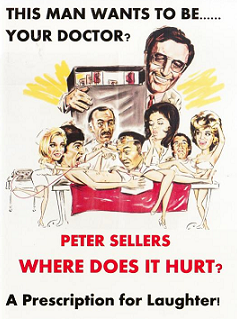
Where Does it Hurt? is a 1972 American comedy film written and directed by Rod Amateau and starring Peter Sellers, Jo Ann Pflug, Rick Lenz, Pat Morita, and Harold Gould. The film is a darkly satirical look at capitalism in a hospital environment.
Babie Doły is a village in the administrative district of Gmina Zblewo, within Starogard County, Pomeranian Voivodeship, in northern Poland. It lies approximately 5 kilometres (3 mi) north of Zblewo, 13 km (8 mi) west of Starogard Gdański, and 48 km (30 mi) south-west of the regional capital Gdańsk.
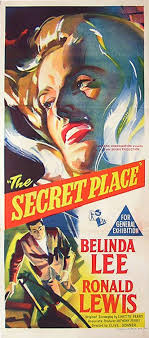
The Secret Place is a 1957 British crime film that was the directorial debut of Clive Donner. It stars Belinda Lee, Ronald Lewis, and David McCallum.

Let's Get Laid, also known as Love Trap, is a 1978 British comedy film directed by James Kenelm Clarke and starring Robin Askwith, Fiona Richmond and Anthony Steel. A man returns to London after being demobbed at the end of the Second World War, only to find himself suspected of a murder in Wapping.

Rosie Dixon – Night Nurse is a 1978 British comedy film directed by Justin Cartwright and starring Debbie Ash, Carolyne Argyle, Beryl Reid and John Le Mesurier. It is based on a novel by Christopher Wood.

The Great McGonagall is a 1974 British comedy film directed by Joseph McGrath and starring Spike Milligan, Peter Sellers and Julia Foster. It was written by McGrath and Milligan.
Jean-Paul Clébert was a French writer.
Les Dragueurs is a 1959 French drama film directed by Jean-Pierre Mocky. British actor Belinda Lee plays a role.
















